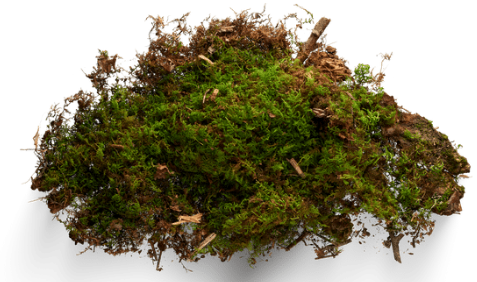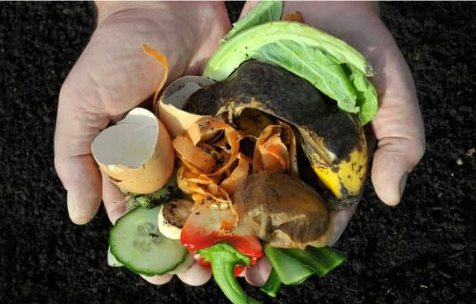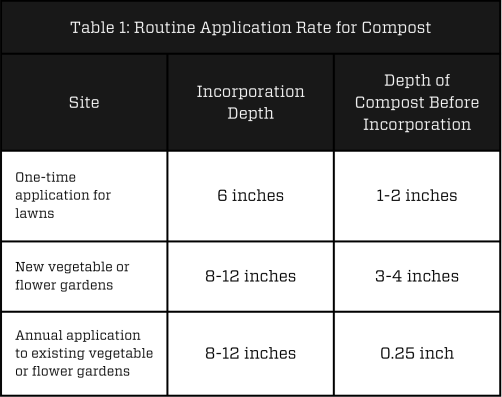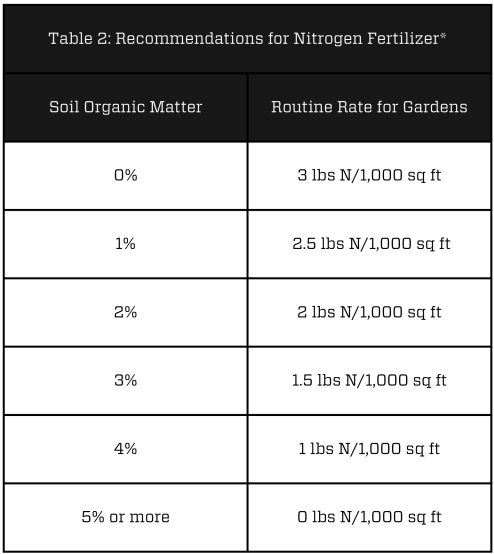by J.G. Davis and D. Whiting, Revised by H. Oleszak, E. Hammond, and J. Murgel (5/24)
Quick Facts…
- On clayey soils, soil amendments improve the soil aggregation, increase porosity and permeability, and improve aeration, drainage, and rooting depth.
- On sandy soils, soil amendments increase the water and nutrient holding capacity.
- A variety of products are available bagged or bulk for soil amendments. However, soil amendments are not regulated the same way as fertilizers, and can be high in salts.
- The addition of soil amendments is informed by site conditions, landscape goals, and soil test results, not prescribed universally.
A soil amendment is any material added to a soil to improve its physical properties for plant growth, such as water retention, permeability, water infiltration, drainage, aeration, and structure. The goal of amending soil is to provide a better environment for roots.
To do its work, an amendment must be thoroughly mixed into the soil. If it is merely buried or placed on top of the soil, its effectiveness is reduced, and it can interfere with both water and air movement and root growth.
Amending a soil is not the same thing as mulching, although many common mulches can be used as amendments. A mulch is left on the soil surface. Its purpose is to reduce evaporation and runoff, inhibit weed growth, and create an attractive appearance. As organic mulches decompose, they can slowly add organic matter to the soil; mulches also moderate soil temperature. Organic mulches may be incorporated into the soil as amendments after they have decomposed to the point that they no longer serve their purpose as mulch.
Organic and Inorganic Amendments
Soil amendments can be organic (derived from living materials) and inorganic (mineral or man-made).
 Organic amendments increase soil organic matter content and offer many benefits. Compost is the most commonly used organic amendment, but other products are available. Over time, organic matter improves soil aeration, water infiltration, and both water- and nutrient-holding capacity. Many organic amendments contain plant nutrients and act as organic slow release fertilizers. Organic matter also is an important food source for bacteria, fungi, and invertebrates that live in the soil.
Organic amendments increase soil organic matter content and offer many benefits. Compost is the most commonly used organic amendment, but other products are available. Over time, organic matter improves soil aeration, water infiltration, and both water- and nutrient-holding capacity. Many organic amendments contain plant nutrients and act as organic slow release fertilizers. Organic matter also is an important food source for bacteria, fungi, and invertebrates that live in the soil.
Inorganic soil amendments are typically used for specialty growing and are tailored to the type of garden being designed and planted. Rock- and crevice gardens, cactus gardens, and sites heavily impacted by foot- or vehicular traffic may benefit from inorganic soil amendments.
Many resources recommend adding rock, gravel, squeegee, or sand to garden beds where native or drought tolerant plants will be grown, in order to improve drainage. Published scientific papers provide mixed conclusions about this practice; in many cases it is clear that adding gravel or squeegee as a soil amendment makes drainage worse. Deep infiltration (i.e. “drainage”) is unequivocally promoted by mulching with gravel, however. The incorporation of soil amendments, inorganic or organic, will be sitespecific, and should be considered in context and not as a blanket prescription.
Wood Products
Fresh wood products typically are not used as soil amendments. Wood products can tie up nitrogen in the soil and cause nitrogen deficiency in plants. Microorganisms in the soil use nitrogen to break down the wood. Over several months to years, as microorganisms complete the decomposition process, nitrogen is released and again becomes available to plants. This hazard is greatest with sawdust, because it has a greater surface area than wood chips.
Composting wood products before using them as soil amendments can mitigate this issue. Adding a nitrogen source (“greens”) to the compost pile can speed the composting process of high-carbon materials (“browns”). This could be plant residues high in nitrogen (such as grass clippings or manure) or a nitrogen fertilizer. For more information on composting, see 7.212, Composting Yard Waste.
Sphagnum Moss and Peat Moss
 Both sphagnum moss and peat moss are common soil amendments. Generally, peat bogs consist of sphagnum moss, the living layer of moss, and peat moss, the sunken, decaying layer that build up over time. Both sphagnum and peat moss promote water retention, particularly
Both sphagnum moss and peat moss are common soil amendments. Generally, peat bogs consist of sphagnum moss, the living layer of moss, and peat moss, the sunken, decaying layer that build up over time. Both sphagnum and peat moss promote water retention, particularly
in sandy soils. However, the use of these amendments has negative environmental consequences. Because peat moss is created over decades to centuries, it is not possible to harvest sustainably. Sphagnum peat, however, may be commercially farmed and sustainably harvested.
Coconut coir is a popular, inexpensive soil amendment that can be used as a renewable alternative to sphagnum moss and peat moss. Coir can be blended as a high proportion of mixes (up to 80% reported in the literature with success). Coir is commonly blended with perlite and compost.
Biosolids
Biosolids are byproducts of sewage treatment. Historically, concerns about using biosolids as soil amendments included heavy metal content, pathogen levels, and salts. Only EPA Exceptional Quality (EQ) class A biosolids are approved for use in landscaping and gardens; they have been treated to eliminate human pathogens and meet EPA guidelines for trace amounts of heavy metals. (The full USEPA regulations pertaining to biosolids can be found in 40 CFR Part 503). Like other animal-based soil amendments, biosolids can be high in salt content.
Manure
 Manure is available in several forms. Fresh manure should never be used as a soil amendment or mulch. Human pathogens, including E. coli, are common in fresh manure. For vegetables with direct contact with the soil, fresh manure must be applied at least four months prior to harvest. For other fruits and vegetables, fresh manure must be applied at least three months prior to harvest. In simple terms, fresh manure would be fall-applied for the spring garden. For additional information on E.coli, refer to fact sheet 9.369 Preventing E. coli from Garden to Plate. Fresh manure can also “burn” plants with high ammonia and salts.
Manure is available in several forms. Fresh manure should never be used as a soil amendment or mulch. Human pathogens, including E. coli, are common in fresh manure. For vegetables with direct contact with the soil, fresh manure must be applied at least four months prior to harvest. For other fruits and vegetables, fresh manure must be applied at least three months prior to harvest. In simple terms, fresh manure would be fall-applied for the spring garden. For additional information on E.coli, refer to fact sheet 9.369 Preventing E. coli from Garden to Plate. Fresh manure can also “burn” plants with high ammonia and salts.
Aged manure refers to manure that has been piled for at least six months but that has not been turned or otherwise aerated. Such manure primarily undergoes anaerobic decomposition, which is slower and does not produce as much heat as aerobic decomposition. Excessive ammonia will have escaped. Salt levels may be higher as the salts concentrate in the decomposing material, or may be leach out with high rainfall. Weed seeds will be viable and human pathogens are still a concern.
Composted manure technically refers to manure that has been through multiple active heating and turning cycles. If heated above 145 degrees F, it will kill most pathogens and weed seeds. In composted manure, organic matter is stabilized (through the rapid decomposition process) making it an ideal soil amendment. Salt levels may be concentrated or may be leach out with high rainfall, so if salt is a concern, be sure to look at the product specification sheet or have it tested by a soil testing lab before application.
Worm Castings
Worm castings (i.e. “worm manure”) have slow-release qualities due to a mucus covering which is slowly degraded by microorganisms. Castings are neutral in pH and contain highly available forms of plant nutrients that are water-soluble, as well as trace elements, enzymes, and beneficial microorganisms. Nutrients within the castings are generally released over the course of several months. For continual release of nutrients, repeat applications approximately at four-month intervals.
Castings can be used in potted plants, soil mixes, and in garden beds. Castings can be harvested every three to four months from a vermicompost bin or purchased. Avoid direct contact between the castings and plants, as castings may have high soluble salt content depending on the feedstock of the worms. Because they are relatively expensive, castings are generally used in small gardens or potting mixes.
Compost
Compost refers to decomposed organic matter and is the “gold standard” of organic soil amendments. In Colorado, a wide variety of compost products are available in bagged and bulk products. These may be a combination of plant-based compost, manure-based composts, biosolids, and other agriculture by-products (such as chicken feathers). Look for compost with 40-60% organic matter (% dry weight). Lower content may indicate a high proportion of sand or soil, and higher percentages indicate the product has not been composted enough.
 Compost is not regulated for nutrient content (i.e. compost is not a fertilizer in a legal sense, though it contains plant-available nutrients). In Colorado, compost is regulated for source material-Class I compost may only contain plant waste, and other materials determined by the Department of Public Health and Application Environment to pose a low risk to human health and the environment. Class II compost may contain animal products and manure. (Complete compost regulations for Colorado may be found in the Code of Colorado Regulations, 6 CCR 1007-2 Part 1). Finished compost that is sold in the state must meet requirements for heavy metal content and pathogens, but not a specific requirement about the state of decomposition. In commercially available products the term “compost” can be used generically, and does not guarantee that the product has been thoroughly decomposed.
Compost is not regulated for nutrient content (i.e. compost is not a fertilizer in a legal sense, though it contains plant-available nutrients). In Colorado, compost is regulated for source material-Class I compost may only contain plant waste, and other materials determined by the Department of Public Health and Application Environment to pose a low risk to human health and the environment. Class II compost may contain animal products and manure. (Complete compost regulations for Colorado may be found in the Code of Colorado Regulations, 6 CCR 1007-2 Part 1). Finished compost that is sold in the state must meet requirements for heavy metal content and pathogens, but not a specific requirement about the state of decomposition. In commercially available products the term “compost” can be used generically, and does not guarantee that the product has been thoroughly decomposed.
With the large livestock industry in Colorado, manure-based composts are most common. These are often high in salts. Use with caution, after getting a specification sheet from the supplier or test results from an analytical lab.
Compost made solely from plant-based products (such as wood chips and yard wastes) are usually lower in salts than animal-based products. However, they are generally more expensive as well, and can still have salt levels too high for plant growth.
Application Rates for Compost
 Ideally, most landscape and garden soils will contain 4-5% organic matter. At this level, the mineralization (release) of nitrogen from the organic matter will be adequate for most plants without additional fertilizers. An annual soil test will be the best measure of the need for compost.
Ideally, most landscape and garden soils will contain 4-5% organic matter. At this level, the mineralization (release) of nitrogen from the organic matter will be adequate for most plants without additional fertilizers. An annual soil test will be the best measure of the need for compost.
Table 1 gives the routine application rates for plant-derived compost (made solely from leaves, grass clippings, wood chips, etc) or compost known to be low in salts. Three cubic yards covers 1,000 square feet approx. 1 inch deep.
Factors to Consider When Choosing a Soil Amendment
Desired Results – In selecting soil amendments, first consider the desired results. To improve the water- and nutrient-holding capacity on sandy or gravelly soils, select well decomposed materials like finished compost and aged manure. To improve aeration, select fibrous materials like composted wood chips and straw.
Potential for Routine Applications – Another important consideration is the potential for routine applications to improve the soil over time, as in a vegetable garden or annual flowerbed. In many landscape settings, the amendment is a one-time application added before planting lawns, perennials, trees, and shrubs.
Longevity – Products that decompose rapidly (like grass clippings and manure) give quick results, while products that decompose slowly (like wood chips and bark chips) provide longer lasting results. For one-time applications in permanent plantings use a combination of materials.
Salts – Salt burn of roots and death of landscape and garden plants is common from over- application of salty soil amendments. Products made with manure and/or biosolids are often very high in salts. Salt levels may increase in the composting process, although water moving through the compost pile can leach out the salts. Use with caution! Plant-based products are usually lower in salts.
Regulations – When purchasing products, gardeners need to understand that there are no regulations about the quality of the product, salt content, or other beneficial or harmful qualities of bagged products. Use with caution, as many soil amendments sold in Colorado are high in salts! Voluntary standards for bulk products may help in product evaluation. For example, the US Composting Council provides lab testing, labeling, and information disclosure that can help gardeners judge the quality of compost products.
Need for Nitrogen Fertilizer – The need for nitrogen fertilizer generally depends on the soil organic matter content of the soil. The more organic matter a soil contains, the greater its nitrogen content and the less nitrogen it requires from a fertilizer. Over time, soil microorganisms break down organic matter and, through this process, release nitrogen that is tied-up in organic matter. Nitrogen release from organic matter is slow, so compost is usually not an effective substitute for fertilizer for high nitrogen-use crops.
Table 2 provides approximate recommendations for nitrogen application rates based on soil organic matter content. However, soil organic matter content is not the only factor that affects the need for nitrogen fertilizer. The type of crop, level of production, and soil nitrate levels should also be considered when determining application rates.

*These are approximate recommendations for annuals or vegetables based on soil organic matter content. When determining application rates, consider crop and desired level of production as well.
Colorado State University, U.S. Department of Agriculture and Colorado counties cooperating. Extension programs are available to all without discrimination. No endorsement of products mentioned is intended nor is criticism implied of products not mentioned.
Colorado State University Extension is an equal opportunity provider. I Colorado State University Extension es un proveedor que ofrece igualdad de oportunidades. https://col.st/0WMJA
Go to top of this page.





